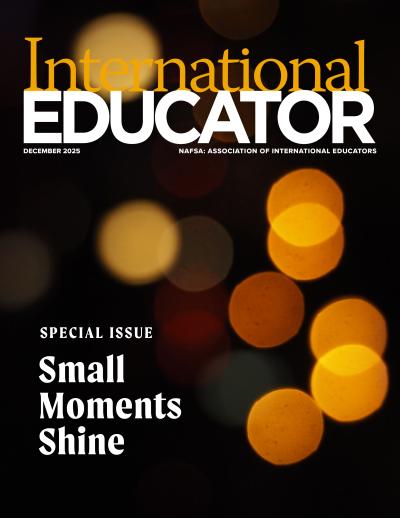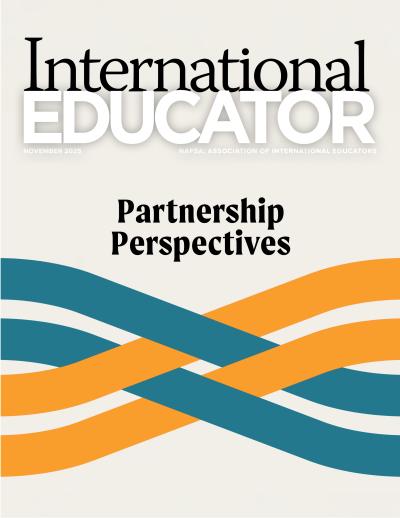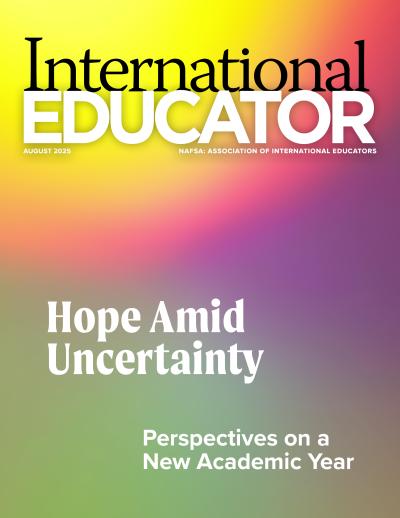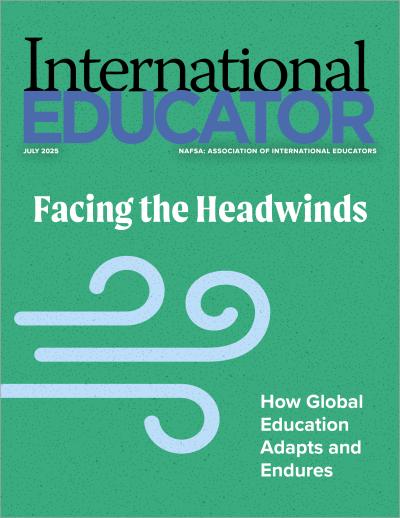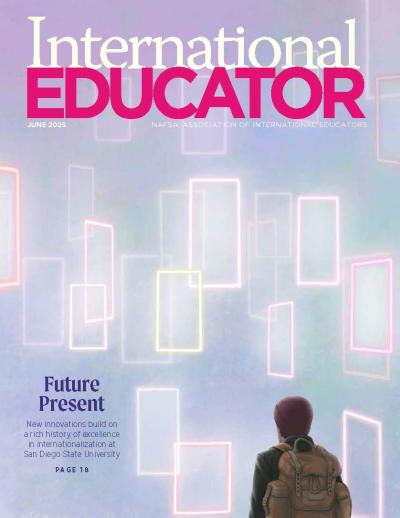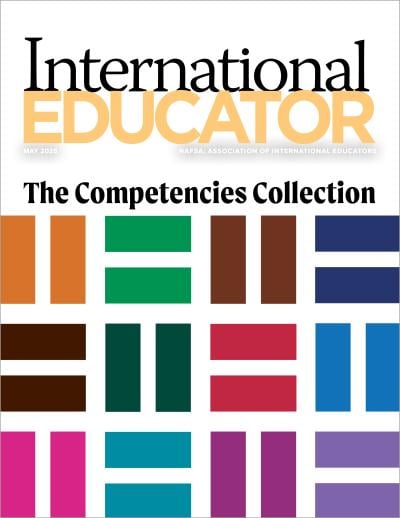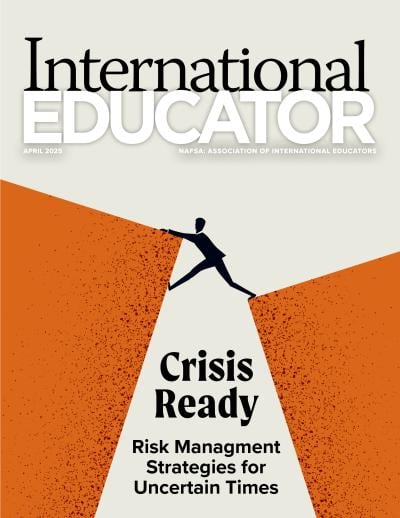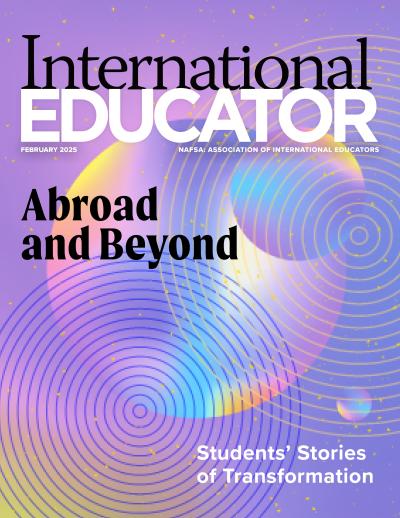Looking Inward: Intra-African Student Mobility on the Rise

For decades, when African students looked beyond their borders for higher education opportunities, the main destinations were Canada, France, the United Kingdom, and the United States; these choices were driven primarily by language alignment, post-study opportunities, and migration pathways. But in recent years, mobility patterns have been shifting: more African students are leaving their home countries not to cross oceans, but to cross borders to other African nations.
This trend is partly due to policy frameworks, notably the African Union’s Agenda 2063, aimed at harmonizing education systems and easing cross-border movement. “The Agenda 2063 encourages a borderless Africa [by] enabling free movement, which has resulted in eased visa and immigration requirements for African students moving within the continent,” says Misco Mungai, program director at HALI Access Network (HALI). “These regulatory and harmonization frameworks make African destinations more attractive, not only because they are accessible but because they signal long-term investment in education integration.”
“Over the last seven or so years, a significant number of our students have preferred to remain on the continent ... There is now a near 50/50 split between those who leave the continent and those who remain, but outside their home country.” —Misco Mungai
Mungai has seen this mobility trend play out over her time at HALI, a group of nonprofits across Africa that work with high-achieving, low-income students to foster global education opportunities.
“In the early years of the [network], nearly all of our students who went abroad for undergraduate studies went to North America,” she says. “Over the last seven or so years, a significant number of our students have preferred to remain on the continent, particularly since the COVID-19 pandemic. There is now a near 50/50 split between those who leave the continent and those who remain, but outside their home country.”
Folabi Obembe, founder and CEO of Worldview International Group, has seen a similar pattern. “African student mobility has diversified significantly. We’ve seen strong interest shift toward emerging destinations such as China, France, Germany, and even within Africa itself—Egypt, Ghana, Kenya, Morocco, and South Africa.”
While there are many factors at play—the high rate of U.S. visa denials for African students, capacity limitations at historic destination countries, and the Agenda 2063—here’s a closer look at the financial, cultural, and economic drivers that affect student mobility patterns within sub-Saharan Africa.
Affordability and Financial Aid
Cost is one of the biggest factors behind the drive toward intra-African study. “For HALI students, the top mobility drivers are the quality of the academic experience and the availability of comprehensive financial support to pursue their studies,” Mungai explains. “It’s cheaper to study in Africa [as] compared to leaving the continent, and it’s now more intentionally accessible, culturally aligned and, for HALI students, there is more funding available.”
Milafu Otieno, director of careers and head of geography at Brookhouse Schools, an international school in Nairobi, agrees. “The top mobility drivers are financial aid or affordability and opportunities upon graduation,” he says. He notes that initiatives like the Mastercard Foundation Scholars Program, which funds talented students with limited financial resources, have played a critical role in making study within Africa more feasible.
Affordability is especially important when families compare local options to high overseas costs, says Obembe. “Within Africa, the drivers are often affordability compared to [the expense of] overseas study, proximity to home and family support, and similarity of culture and environment.”
Cultural and Linguistic Alignment
Beyond affordability, cultural familiarity plays a key role in shaping mobility. “Many students want to be in an environment that is culturally aligned with their own,” Mungai relays. “We have found that HALI students who transition to a university in Africa assimilate faster and have an easier time integrating into their new community, compared to those who leave the continent.”
When choosing a study destination in Africa, language can also shape preferences. “Francophone students often prefer Egypt, Morocco, or Tunisia, while Anglophone students lean toward Ghana, Kenya, and South Africa,” Obembe explains. “System alignment is also key. Students want degrees [that are] recognized back home, and they often choose countries whose curricula mirror their own secondary school systems.”
“System alignment is also key. Students want degrees [that are] recognized back home, and they often choose countries whose curricula mirror their own secondary school systems.” —Folabi Obembe
Otieno points out that English helps make Anglophone countries especially attractive. “English is widely spoken on the continent and therefore Anglophone countries become more attractive, like Ghana, Kenya, and South Africa,” he says. “French-speaking countries such as Mauritius also ensure they have English as a [language] of instruction at the university,” he shares.
Strong Education and Economic Systems, Closer to Home
Certain countries are emerging as clear hubs for education. “Kenya, Ghana, and South Africa are quite popular destinations,” says Mungai. “They have a combination of strong academic systems and a vibrant economic environment.”
Obembe notes that South Africa is particularly dominant. “South Africa is the biggest intra-African hub, attracting students from across Southern, Eastern, and even West Africa due to its advanced infrastructure, relatively affordable tuition, and English language system. Ghana and Rwanda have also grown as destinations because of political stability, strong private universities, and regional recognition.”
Students are also weighing the relevance of their degrees to Africa’s future. “Students increasingly want skills tied to Africa’s job market, like entrepreneurship, technology, healthcare, and agribusiness,” Obembe relays. “This expansion in program offerings within African universities has encouraged students to look close to home, where their studies feel more directly relevant to the challenges and opportunities in their communities.”
Looking Ahead: Mobility Shapes the Future of African Higher Education
The growth of intra-African student mobility will likely have long-term benefits for the continent. “The more we focus on keeping more African students in Africa, the more we will influence investment into African higher education [and] policy improvements, increase demand for partnerships with African universities, and ultimately spur economic growth on the continent,” Mungai says. “At the same time, we must recognize students’ choices to pursue opportunities abroad. Efforts in advocacy, investment, and practice should support both global mobility and the retention of talent on the continent.”
“The future will be about balance—African students will continue to pursue opportunities [abroad], but we will [also] increasingly see intra-Africa mobility rise.” —Folabi Obembe
Obembe sees the balance shifting. “African students are no longer simply ‘looking outward,’” he says. “The future will be about balance—African students will continue to pursue opportunities in Canada, the United Kingdom, and the United States, but we will [also] increasingly see intra-Africa mobility rise as cost, visa restrictions, and capacity issues abroad force students and families to rethink options closer to home.”
Students themselves are rethinking the future, says Otieno. “Parents are now more accommodating as students move away from the traditional career programs in medicine, engineering, and architecture,” he says. “Students are now more aware of opportunities after graduation.” •
NAFSA Resources
- Recruitment Trends in sub-Saharan Africa webinar
- The Department of Commerce Presents the Market Diversification Tool for International Education
- Effective Communication and Planning with Parents
- International Families' Guide: A Guide to Undergraduate Study in the United States
- NAFSA’s Africa Interest Group
About International Educator
International Educator is NAFSA’s flagship publication and has been published continually since 1990. As a record of the association and the field of international education, IE includes articles on a variety of topics, trends, and issues facing NAFSA members and their work.
From in-depth features to interviews with thought leaders and columns tailored to NAFSA’s knowledge communities, IE provides must-read context and analysis to those working around the globe to advance international education and exchange.
About NAFSA
NAFSA: Association of International Educators is the world's largest nonprofit association dedicated to international education and exchange. NAFSA serves the needs of more than 10,000 members and international educators worldwide at more than 3,500 institutions, in over 150 countries.
NAFSA membership provides you with unmatched access to best-in-class programs, critical updates, and resources to professionalize your practice. Members gain unrivaled opportunities to partner with experienced international education leaders.





